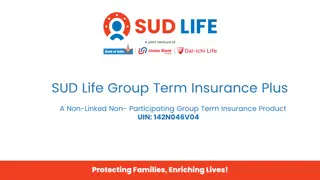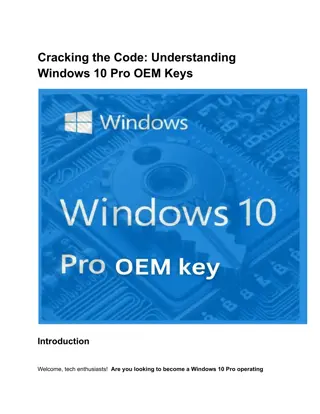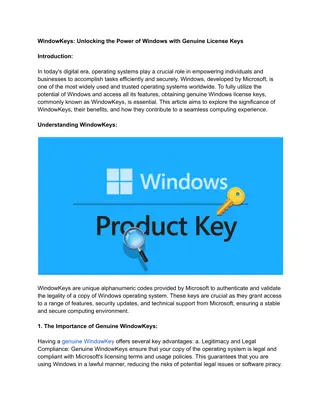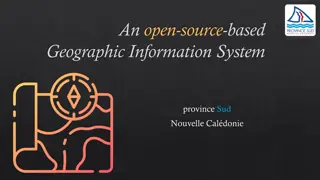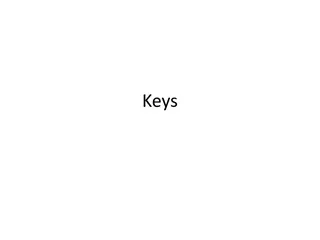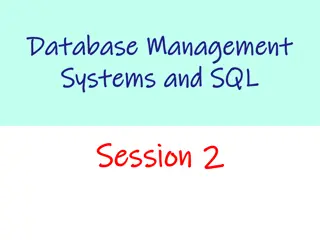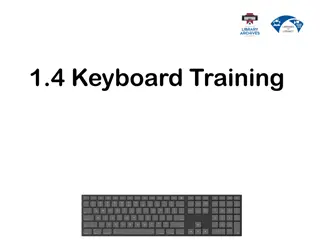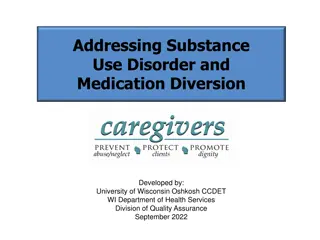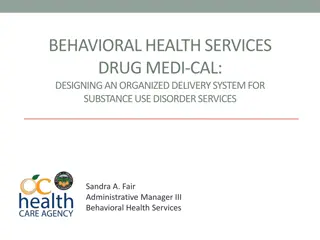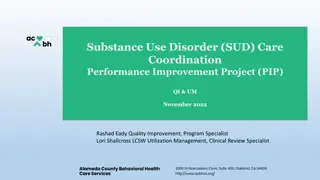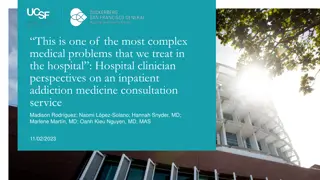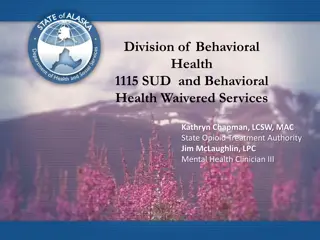
Evidence-Based Interventions for Stimulant Use Disorders
Explore the effectiveness of psychosocial interventions, particularly contingency management, in managing cocaine and amphetamine-related disorders. Research highlights the benefits of utilizing evidence-based approaches for better treatment outcomes and reducing stimulant use. Recommendations include prioritizing contingency management in outpatient programs for individuals with stimulant use disorders.
Download Presentation

Please find below an Image/Link to download the presentation.
The content on the website is provided AS IS for your information and personal use only. It may not be sold, licensed, or shared on other websites without obtaining consent from the author. If you encounter any issues during the download, it is possible that the publisher has removed the file from their server.
You are allowed to download the files provided on this website for personal or commercial use, subject to the condition that they are used lawfully. All files are the property of their respective owners.
The content on the website is provided AS IS for your information and personal use only. It may not be sold, licensed, or shared on other websites without obtaining consent from the author.
E N D
Presentation Transcript
Contingency Management, Part I Stimulants Mini-Deck #13
Psychosocial Interventions for Cocaine and Psychostimulant Amphetamine-Related Disorders Twenty-seven randomized controlled studies (3,663 participants) fulfilled inclusion criteria and had data that could be used for at least one of the main comparisons. Compared different behavioral interventions for retention in treatment and reducing stimulant use. Results showed using some form of contingency management showed better results both for reducing dropouts and lowering stimulant use. 2 SOURCES: Haidich, 2010; Knapp et al., 2007.
Psychosocial Interventions for Individuals with Cocaine and Amphetamine Use Disorder Meta-analysis of 50 clinical studies (6,943 participants) on 12 different psychosocial interventions for cocaine and/or amphetamine addiction. The combination of contingency management and community reinforcement approach was the most efficacious and most acceptable treatment both in the short and long term. 3 SOURCE: De Crescenzo et al., 2018.
More (Recent) Evidence for Contingency Management as a Response to Simulant Use (1) A 2020 systemic review of 27 studies found that contingency management has broad benefits in: Greater drug adherence Higher utilization of other treatments and medical services Reductions in risky sexual behavior Recommendation: Outpatient programs that offer treatment to people with a methamphetamine use disorder should prioritize adoption and implementation of contingency management. 4 SOURCE: Brown & DeFulio, 2020.
More (Recent) Evidence for Contingency Management as a Response to Simulant Use (2) Results: A total of 157 studies comprising 402 treatment groups and 15,842 participants were included. Only contingency management programs were significantly associated with an increased likelihood of having a negative test result for the presence of cocaine (OR, 2.13; 95%) Conclusions: In this meta-analysis, contingency management programs were associated with reductions in cocaine use among adults. 5 SOURCE: Bentzley, et al., 2021.
Responding to Global Stimulant Use: Challenges and Opportunities Psychosocial interventions other than contingency management have weak and non-specific effects on stimulant-related problems No effective pharmacotherapies have been approved by the FDA Substantial research investment is needed to develop more effective, innovative, and impactful prevention and treatment 6 SOURCE: Farrell et al, 2019.


